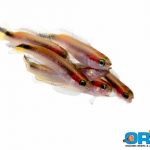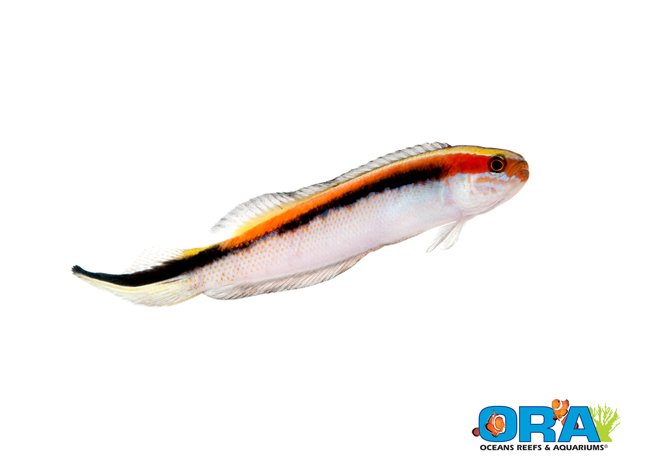Here at ORA we take pride in our successes with raising novel species. There are many species of fishes which, for one reason or another, are uncommon in the marine ornamental trade. Sometimes a fish’s scarcity is justified (large maximum size, feeding and temperature requirements, cryptic nature, collection areas off limits, etc.) and other times it seems that a species would make an ideal aquarium inhabitant and just hasn’t yet established a following within the hobby. This past year we focused our attention on the Eastern Hulafish (Trachinops taeniatus). This species has undoubtedly been overlooked by many reef hobbyists due to the fact that within its naturally-occurring range the water temperature averages around 65 degrees Fahrenheit, much cooler than a typical reef aquarium.

Much to our surprise these fish thrived in our systems and we successfully raised several batches of larvae during 2013. Most of the broodstock and larval systems at ORA are maintained at temperatures to accommodate the tropical species we produce. The Eastern Hulafish has proven to be somewhat forgiving in regards to temperature and have spawned and been raised to market size without modification to our systems. A tradeoff to keeping these fish in warm water appears to be that the fish need to be fed quite frequently. They prefer small food items such as copepods, brine shrimp, small pellets and finely-chopped seafood. They are colorful fish, with yellow, red, and white stripes and have a maximum size of about 4 inches. They prefer to live in loose schools and exhibit an exaggerated swimming style that is reminiscent of a hula dancer. Eastern Hulafish have very placid dispositions and it is not recommended to keep them with boisterous tankmates such as dottybacks. Their fast swimming habits make them susceptible to jumping out of aquaria that are not properly covered. If these conditions are considered and the water temperature is kept below 78 degrees Fahrenheit in their tank, our experience suggests they will do quite well in reef aquaria.
These fish will be available in limited numbers. We plan to continue our work with them and, possibly, other species within the genus Trachinops. Maybe the Hulafishes will earn a following in the marine hobby; we think they’re deserving of it.



